Check out our latest blog article: From component to enterprise – modular robotics done right.
Baby Tech Market Overview: Identifying Business Opportunities for Technology Startups
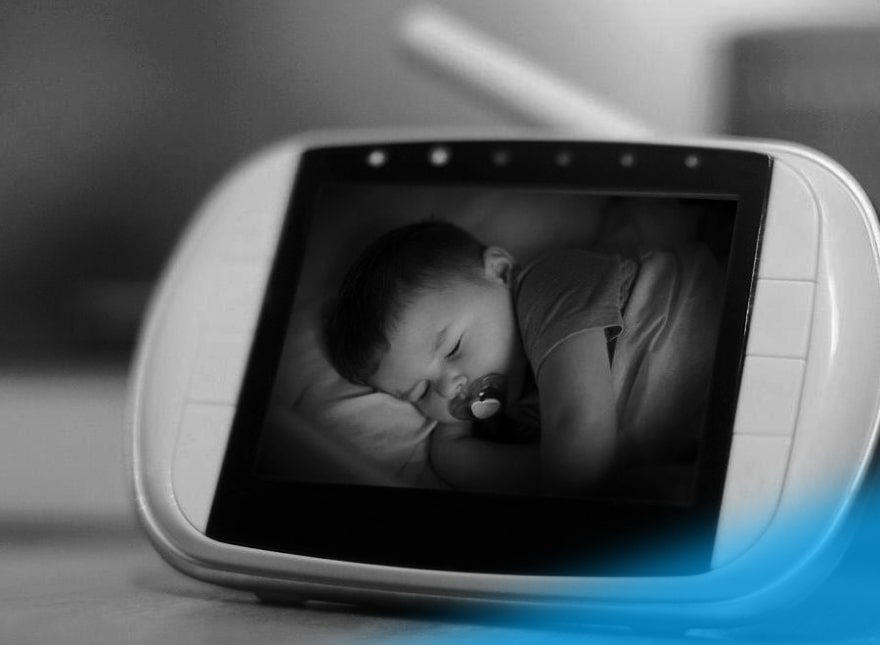
The demand for Baby Tech products and services is growing exponentially. A tech-savvy generation of Millennial parents is seeking modern digital solutions to the age-old issue of raising children.
In this article, we take a closer look at the opportunities that the novel industry offers to startups, highlight projects that made it big, and draw your attention to pivotal things to consider when developing new solutions for the Baby Tech sector.
Baby Tech is a Growing Market. Here's Proof
- Millennials are having babies. Millennials are parents to 50% of the 3.8 million babies born in the USA in 2018. They’ve overtaken Baby Boomers as the nation’s largest living adult generation, and their domination will continue to grow.
- Parenting is going digital. Millennials are comfortable with using multiple devices daily. They seek advice on the Internet and social media, and have a higher demand for baby technology products than previous generations. Connected monitors, smart sleepers, and breast pumps help them practice a more digital approach to parenting.
- The number of working mothers is rising. Recent statistics show a higher percentage of working mothers than four decades ago. The percent of working mothers with children under three years old is showing rapid growth—from 35 to 55%. Overall, working parents amounted to 32.7% of the US labor force in 2016.
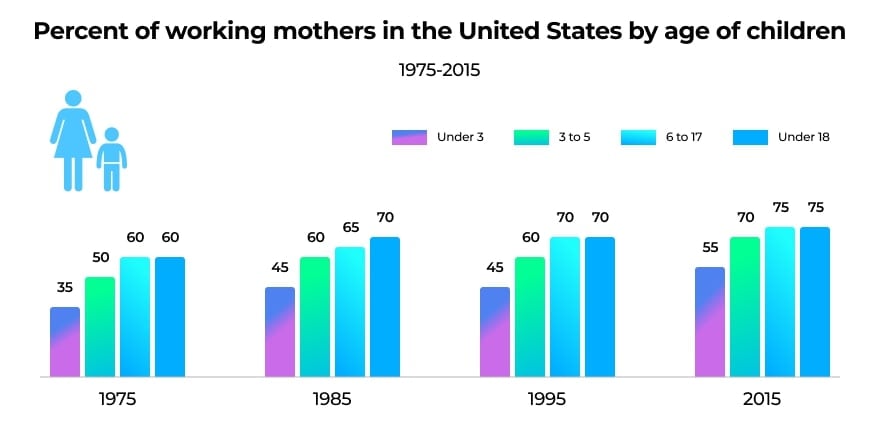
- Young adult households are better-off. The income of Millennial households is higher than most older Americans had at the same age. As a result, young parents can afford Baby Tech solutions, including smart toys, baby formula makers, and sleep aids.
- The market is growing. US Millennial parents are contributing to the growth of the US Baby Tech market: Forbes estimates its current size at $46 billion. According to Statista, the most significant segment—the baby monitor market—is expected to reach $1.735 billion by 2024, growing at a CAGR of 8.6% between 2016 and 2024. The report from Allied Market Research (issued in April 2020—right after the COVID-19 outbreak) shows a lower CAGR (5.4% from 2020 to 2027) but predicts the sector could reach $1.9 billion by 2027.
What Types of Baby Tech Solutions are Trending Up?
Startups working in the Baby Tech sector usually target two main categories of users—expecting parents and families raising children. Pregnancy trackers, heart rate and breathing monitors, and EduTech solutions dominate the baby technology market.
Infant Care Solutions
Multiple monitoring systems and smart devices can track newborns and toddlers' health and safety and help parents take care of their babies. These include wearable oxygen and heart rate monitors, non-contact body temperature thermometers, connected scales, and smart breast pumps.
Examples of infant care solutions:
- Baby monitoring devices. Owlet Smart Sock tracks the oxygen level and heart rate of a sleeping child and alerts parents about heart rate fluctuations and breathing difficulties. The sock uses pulse-oximetry technology, connects to a smartphone, and can be charged wirelessly. The SNOO smart bassinet detects crying, rocks fussy infants back to sleep, and can be controlled remotely with the help of a mobile app.
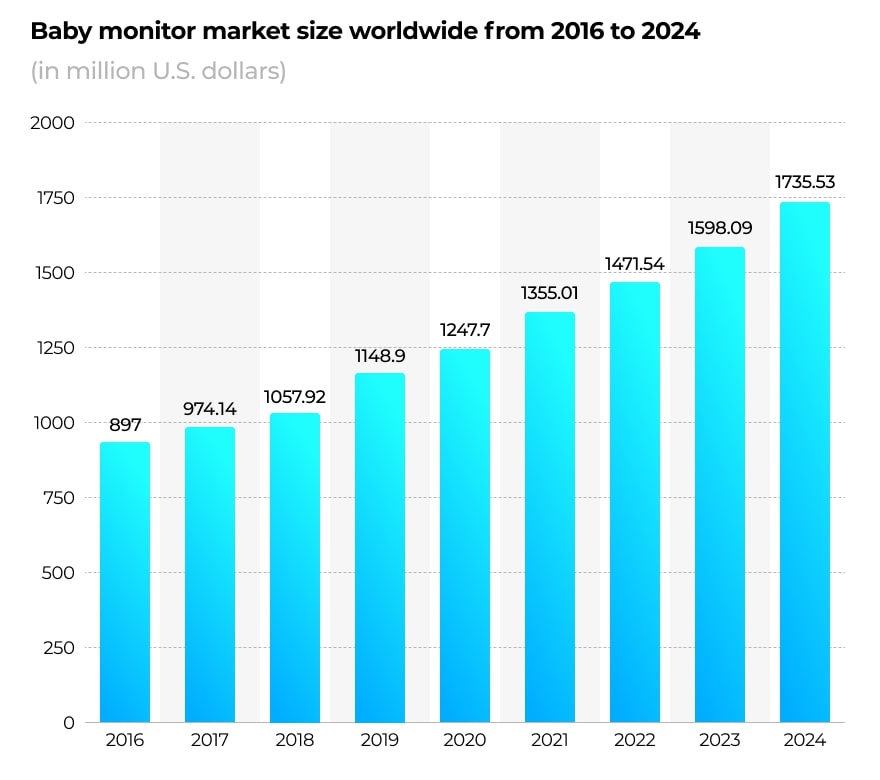
- Body temperature thermometers. While Kinsa Smart Ear thermometer, which takes a one-second reading, needs to be placed in an ear, TempTraq comes with a wearable patch that sends results to the selected device via BLE technology.
- Hands-free breast pumps. The lightweight devices like Elvie and Willow use wireless connectivity and can be worn inside a bra. To help women monitor milk volume and track feeding history, the pumps connect to dedicated mobile apps.
Solutions for Learning and Fun
These Baby Tech solutions, which vary from robotic toys to AI-based educational platforms, are designed to boost children's cognitive and social skills:
- Wearables. The Starling wearable clip helps parents with early child development. While the clip tracks metrics on verbal engagement, motion, noise, and even sunlight exposure, the app motivates parents to have quality conversations with children and gives ideas on how to keep them moving.
- Robotic toys with touch sensors and voice recognition capabilities. For example, the fuzzy Wi-Fi connected robot Woobo recognizes speech and answers questions, expresses feelings, and plays games with kids four years and up.
- Augmented Reality toys. The Hero Vision Iron Man AR Experience game allows kids to assume the role of the Iron Man: all they have to do is don a helmet, download the app, slot a smartphone inside the AR goggles, and place AR markers around the room.
- Board games with Augmented Reality capabilities. The solutions like Tacto AR blend the digital and physical worlds together: to play games, kids need both the tablet with the downloaded app and actual game pieces.
Smart Solutions for Remote Baby Monitoring
These Baby Tech solutions allow parents to monitor their children's well-being, comfort, and whereabouts. There are smart car seats, air quality monitors, room temperature monitoring devices, connected natural light lamps, and GPS trackers in this market segment.
Some examples of remote baby monitoring solutions include:
- Sirona M, a smart car seat from Cybex that ensures babies stay safe in the car. The solution monitors the well-being of infants/children through a smart chest clip synced with the installed vehicle receiver and a smartphone.
- Smart GPS trackers monitor a child’s location, send notifications when they leave a designated area, and allow the wearer to report emergencies using an SOS button, text message, or call. To pinpoint the position and connect to smartphones, trackers use multiple technologies like GPS, LBS, Cellular, Wi-Fi, and Bluetooth. The form of the tracking solution may be different. Jiobit, for example, is a wearable device that a child can clip onto a backpack. The solution performs real-time tracking and connects to the phones of selected caregivers. To monitor a child’s location, parents can also use smartwatches like Lil Tracker and Mr. Securio. Mr. Securio stores movement history and sends written or audio messages from parents; Lil Tracker performs two-way voice calls and listens to surroundings.
Fertility and Pregnancy Trackers
This category includes solutions targeting future parents and women aiming to get pregnant:
- Period-tracker apps such as Clue, Flo, and Cycles calculate the average length of past menstrual cycles and evaluate related health parameters to forecast a woman’s fertility window. Although multiple studies have concluded that apps using only cycle length make inaccurate or imprecise predictions, women's health apps remain very popular. Flo, for instance, has over 137 million app downloads.
- Alternatively, women may rely on various smart devices. For example, the oral thermometer Wink helps the fertile tracking app Kindara monitor basal body temperature. The fertility tracker from Ava is a smart bracelet worn only at night. While a woman sleeps, the solution tracks multiple physiological parameters like skin temperature, resting pulse rate, and perfusion, then uses this data to predict the optimal days for conception.
- Prenatal monitors allow parents to keep an eye on the well-being of a child in the womb. Multiple at-home fetal dopplers use soundwaves to listen to a baby’s heartbeat—starting from 9 to 16 weeks into the pregnancy. Like the one from HeraBEAT, these solutions usually consist of a portable device and mobile app, and come with the possibility of sharing pregnancy data. The alternative tracker—the Avalon CL Fetal and Maternal Pod and Patch from Philips—monitors a child's heart rate and uterine activity with special patches placed on the mother’s belly. The tech giant released the solution in response to the COVID-19 pandemic.
Baby Tech Startups that Got Funded and Won Major Technology Awards
Years ago, Baby Tech was considered a niche market with little startup funding—today, a higher number of investors want to get into this booming marketplace. According to Crunchbase, investors pumped $500 million into companies within the sector in 2013-2019. Here are some leaders in funding featured on Crunchbase:
Nutrition companies
- Alcresta, a producer of enzyme-based nutritional products for infants (total funding: $139.4M)
- Prolacta Bioscience, a company that offers human milk-based nutritional products for premature infants in neonatal intensive care ($78M)
- ByHeart, an infant nutrition provider ($70M)
Child transportation services
- Zum ($71M)
- HopSkipDrive ($45M)
Companies specializing in smart baby products
- 4moms, a company that develops smart products (bassinets, seats, and playards) aimed at prenatal to preschool children ($60M)
- Happiest Baby, the world's first producer of smart sleepers ($45.2M)
Baby monitor producers
- Nanit, a producer of smart baby monitor and sleep tracker devices ($49.6M)
- Owlet Baby Care, a company offering sleep monitors for toddlers ($48M)
Child care management, family support, and learning platform creators
- A platform for working parents Cleo ($40.9M)
- Preschool & child care management software Brightwheel ($33.8M)
- Kidaptive, a platform that introduces entertaining and adaptive content to help children learn ($38.7M)
Baby Tech solutions receive both investments and awards. Consumer Electronics Show (CES), the most influential tech event in the world, hosts the BabyTECH Summit, which focuses on tech innovation from fertility to pregnancy and birth. In 2019, the competition pool nearly doubled, showing an 88% increase in entries.
The best baby sleep and audience favorite solution at CES-2019 is the sleep monitor Miku, which tracks breathing, sounds, and sleeping patterns. Connecting to a smartphone, it plays sleep sounds and lullabies, streams real-time video and audio, and features HD video and photos.
The people’s most-liked solution from 2018 is the under-mattress fertility tracker Percent from EarlySense. The company created the first contact-free fertility monitor: the device connects to a smartphone and fits under a mattress. The solution tracks heart and breathing rates to predict fertility windows. The list of recent winners also includes a smart bassinet, sleep monitors, smart breast pumps, a smart bottle, a smart sock, location trackers, and smart toys.
Solutions that received both funding and praise take parenting to a new, smarter level. Many successful products free up time for busy parents yet help them stay proactive caregivers. With smart solutions, parents can make data-driven decisions for getting pregnant, feeding their child, and helping their child sleep and develop.
5 Things to Consider When Developing Baby Tech Solutions
In case your technology company is eyeing the burgeoning Baby Tech market, here are a few things you should consider to make the process of product development go smoothly:
1. How you spend your resources. Like any startup, a Baby Tech company planning to launch a new, innovative product, may have a limited budget. Thus, we recommend that you include a Discovery Phase in the flow. This helps verify the concept, collect functional requirements to identify what the solution should do, assess implementation risks, functional health, and potential roadblocks, and spend your available resources wisely. The Discovery Phase identifies the mandatory set of features to release an MVP and provides sufficient information to present the solution to investors.
2. The expertise required to develop a Baby Tech solution. The tech stack depends on the project details and may vary drastically, whether you plan to release an e-learning platform, robotic toy, or smart bassinet.
If you aim to develop an IoT solution within the Baby Tech market, it’ll rely on four standard components: hardware, firmware, back-end infrastructure, and mobile applications.
- On the hardware level, stationary baby monitors can be equipped with built-in microphones, speakers, and 4K video cameras to record high-definition videos. Wearable devices, such as smartwatches for children, usually incorporate a PCB, data processor, sensors, battery, accelerometers, gyroscopes, and GPS modules.
- The software components feature embedded systems, mobile apps, web or desktop applications, and dashboards. Firmware and middleware allow Baby Tech solutions to collect, process, analyze, and transfer data, and merge the solution with other devices.
- Back-end engineers define where and how to store, process, and relay data to endpoint devices and user apps, as well as develop the application logic. To exchange data with cloud services, smart baby care solutions can rely on wireless networking technologies, such as Wi-Fi and cellular connectivity. On this side, specialists also conduct big data analysis and apply Machine Learning algorithms if necessary.
3. Compliance with the regulatory standards. This can involve industry-specific standards and regulations, such as HITRUST, HIPAA, HL7, DICOM, ISO 13485:2016, FDA requirements, and European requirements for medical devices.
Baby Tech solutions handle sensitive data and can directly influence a child's well-being. Thus, consumer electronics companies that leave baby care devices vulnerable to cyberattacks put a child's health and life at risk. Following cybersecurity standards will help startups prevent security issues.
When developing a secure connected device, it is crucial to release updates of software and cloud infrastructure, equip the solution with strong authentication, and prohibit users from creating weak passwords. For maximum security, deploy end-to-end data encryption, and implement intrusion detection and prevention (IDS/IPS) systems.
4. Time to market. There are three pillars of a successful product launch—on time, on budget, and up to specification. Innovative and new to the industry, Baby Tech solutions have a fourth pivotal factor—the necessity to come to the market faster than competitors. To help ensure this, Business Analysts can help startups identify technology roadblocks early in the development process and control the project scope to optimize time to market.
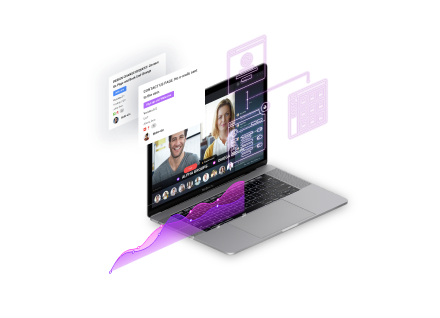
5. Choosing the right tech vendor(s). Few tech startups possess the expertise and human resources to create a baby care solution under one roof. You'll end up outsourcing the development of certain technology components underlying the logic of the Baby Tech solution to different vendors or hire a company that offers turnkey product development services. Both approaches have their benefits and downsides.
A smart connected baby care device has complex multi-faceted infrastructure, and it can be hard (and cost a fortune!) to find a company with outstanding niche expertise for all project areas. Thus, you may end up hiring a team with impressive hardware engineers and not so great mobile app developers. Another risk is dependence on the single partner in terms of budgets, human resources, and tech stack.
As for a multi-vendor environment, you’ll have to use a lot of effort to ensure smooth collaboration in teams, and identify and prevent incompatibilities in the technologies you’re using. While multiple suppliers need your coordination on different levels of product development, going with a single vendor means the latter will manage the process by itself.
More articles on the topic

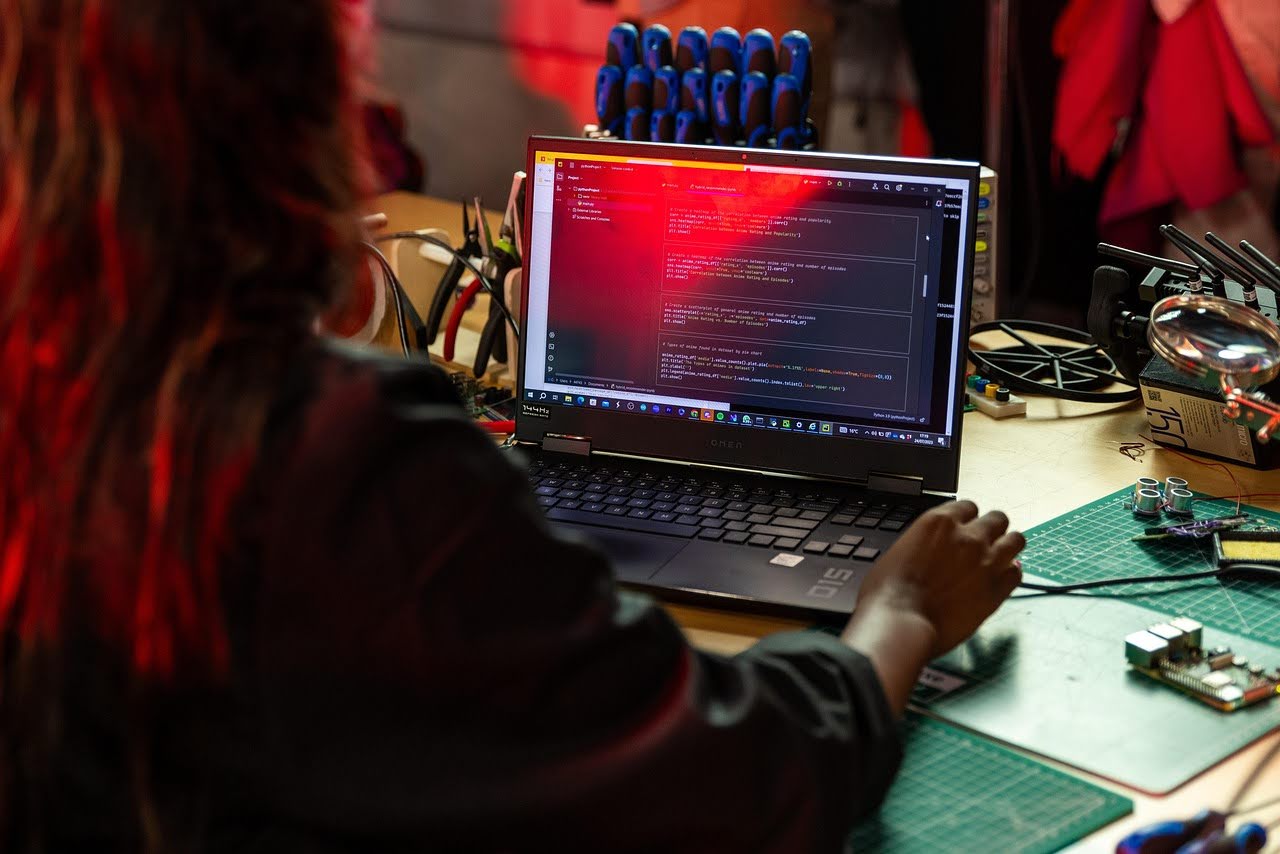

![[Webinar] T-Winning Strategies: How Digital Twins Drive Innovation & Efficiency](https://www.softeq.com/hubfs/Digital%20Twins%20Webinar.png)
![[Webinar] Wearables: Past, Present, & Future](https://www.softeq.com/hubfs/Blog%20Featured%20Image.png)

